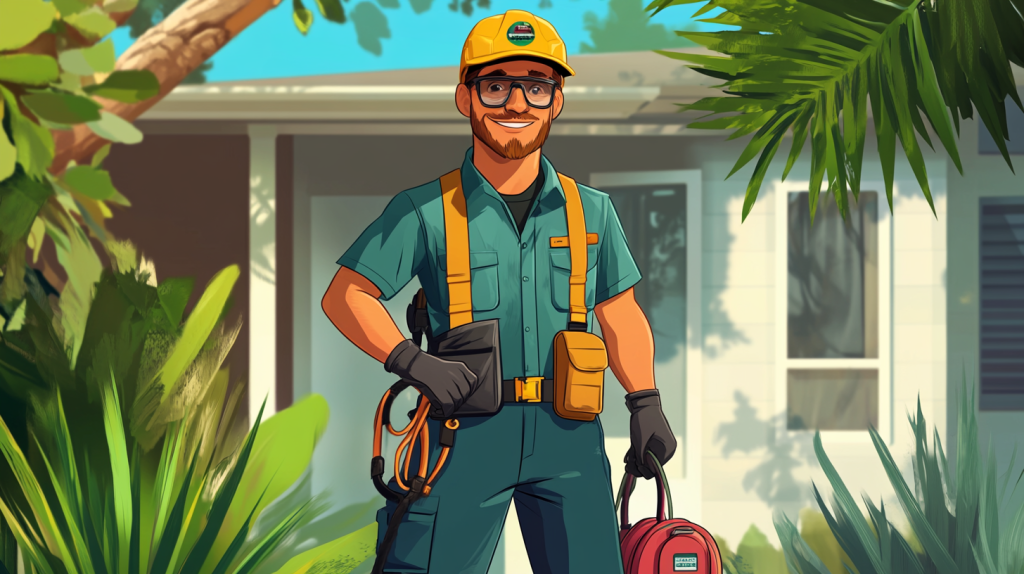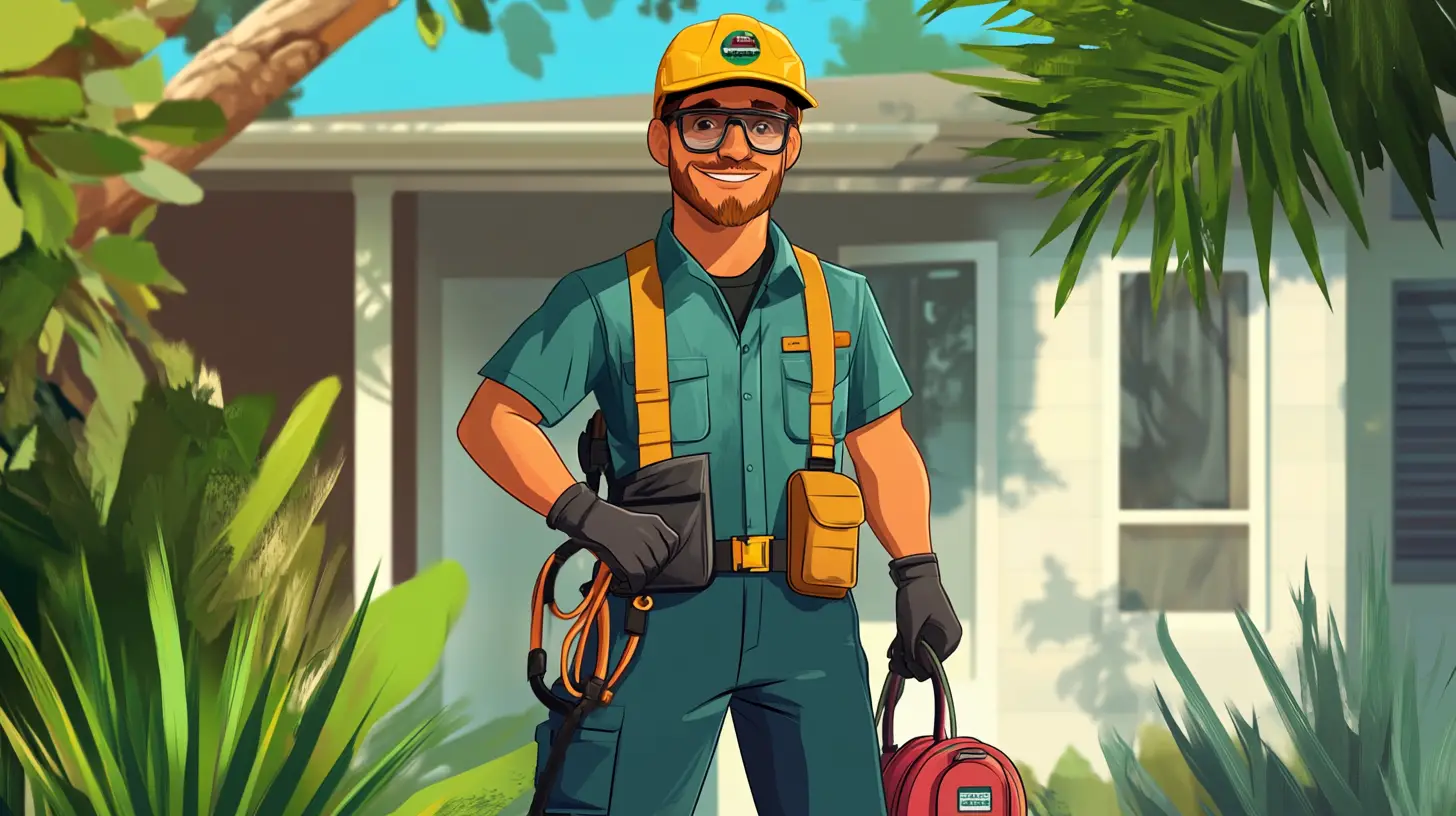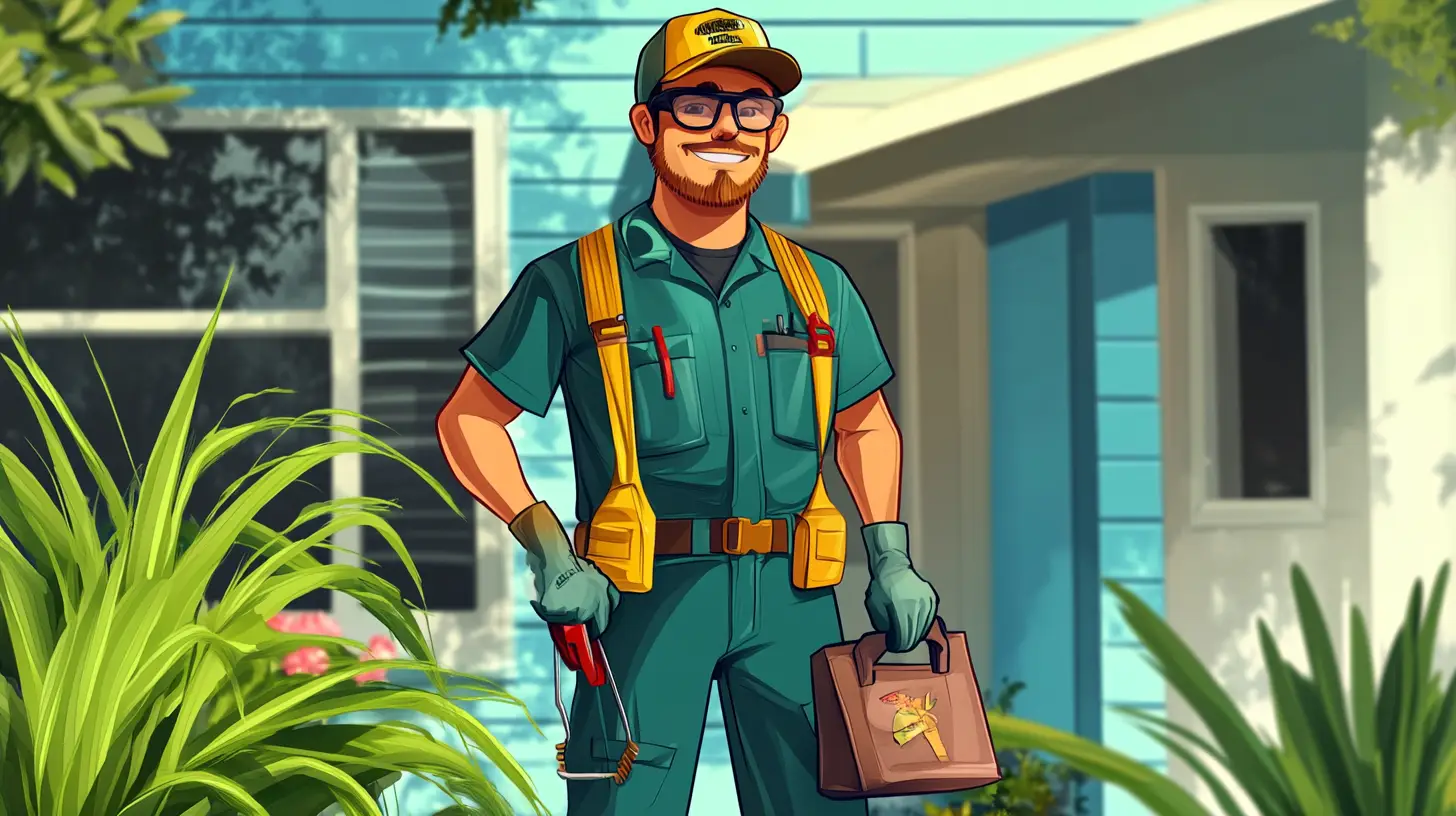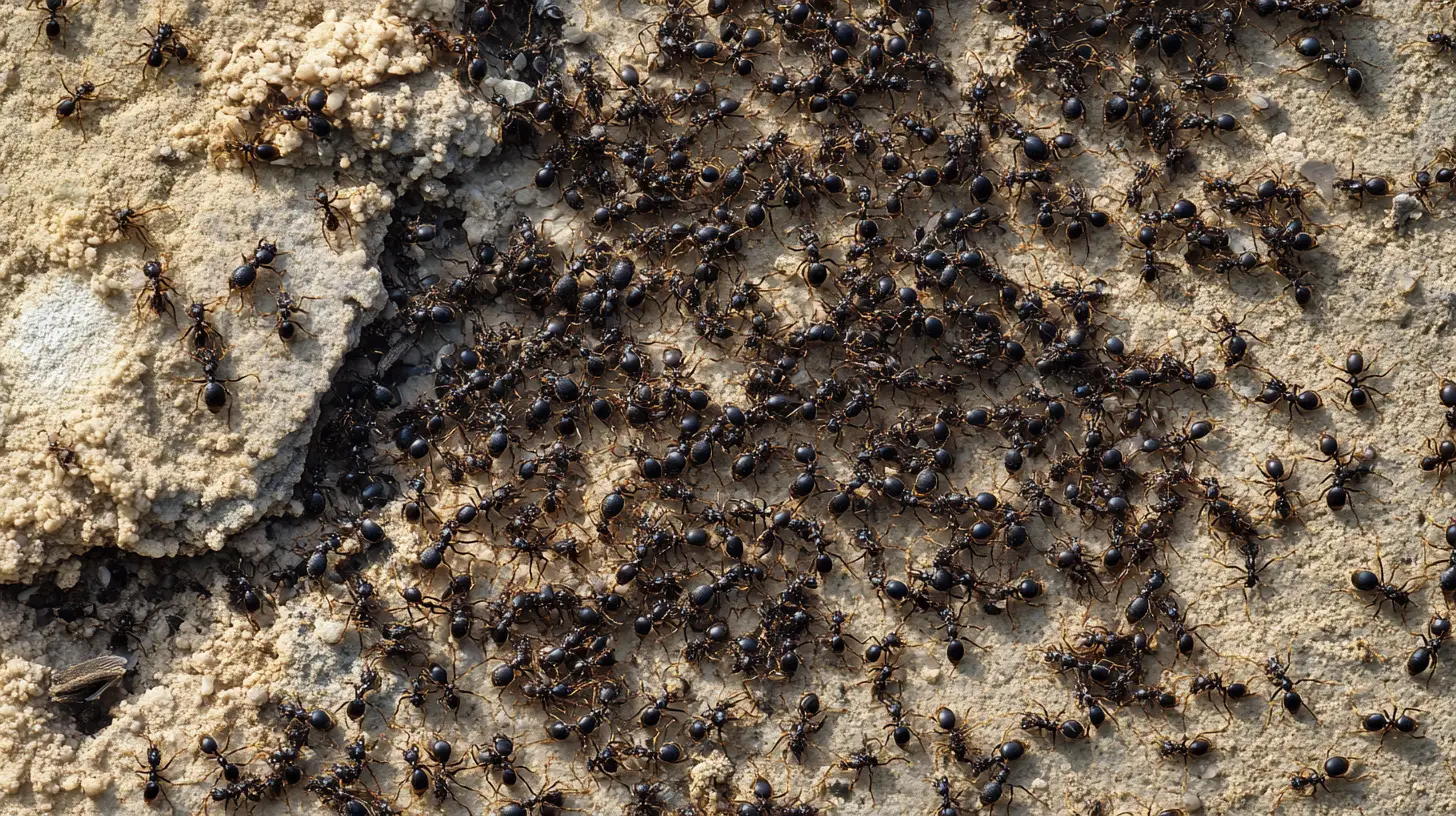
Rodent removal services in Port Charlotte typically cost between $150-$600 depending on infestation severity, property size, and the specific treatment plan needed to address the unique challenges posed by Florida’s year-round pest activity. For Port Charlotte homeowners, understanding effective, permanent rodent solutions helps protect both property investments and family health from these persistent pests. Let’s explore comprehensive approaches to rodent management tailored specifically to our Gulf Coast community.
Key Takeaways
- Permanent rodent control requires a comprehensive approach including inspection, exclusion, population reduction, habitat modification, and ongoing monitoring tailored to Port Charlotte’s subtropical environment.
- Professional rodent control services cost $250-$1,200 depending on infestation severity, property size, and required services, with most standard Port Charlotte homes averaging $350-$600 for initial treatment.
- Effective exclusion work is the cornerstone of lasting results, preventing re-infestation by sealing all potential entry points with materials that withstand Florida’s high humidity and temperature fluctuations.
- Port Charlotte’s year-round warm climate eliminates winter die-offs common in northern regions, necessitating more thorough control approaches and ongoing vigilance.
- Local rodent species include roof rats, Norway rats, and house mice, each requiring different control strategies based on their behavior and habitat preferences.
- Waterfront properties, homes near conservation areas, and those with mature landscaping face higher rodent pressure and often require more comprehensive management programs.
- Professional services provide the highest success rates (90-95%) when they combine exclusion, trapping, sanitation guidance, and follow-up monitoring rather than focusing solely on population reduction.
How to Get Rid of Rodents Permanently in Port Charlotte
Achieving permanent rodent control in Port Charlotte homes requires a comprehensive approach addressing the specific challenges of our subtropical climate:
- Thorough inspection identifies all entry points, nesting areas, and food sources specific to your property. Professional inspections check attics, crawl spaces, garage areas, and exterior perimeters where Port Charlotte homes often have vulnerabilities.
- Complete exclusion seals all potential entry points using rodent-proof materials that withstand Florida’s high humidity and temperature fluctuations. This includes sealing gaps around pipes, vents, utility lines, roof intersections, and foundation cracks common in Port Charlotte construction styles.
- Population reduction eliminates existing rodents through strategic trap placement and/or rodenticide application based on species identification and behavior patterns.
- Habitat modification removes attractants by addressing vegetation management, proper food storage, and waste containment. In Port Charlotte, special attention to fruit trees, palm trees, and water sources proves particularly important.
- Ongoing monitoring prevents re-infestation through regular checks of previously identified vulnerable areas and maintenance of exclusion barriers.
Properties in flood-prone areas of Port Charlotte like those near harbor areas, Peace River, or Myakka River require special consideration, as rising water during storm events can drive rodents toward homes seeking shelter. Similarly, homes near undeveloped lots, conservation areas, or those backing to canals face higher pressure from Norway rats and roof rats common throughout Charlotte County.
For most Port Charlotte homes, permanent rodent control combines professional initial treatment with homeowner maintenance of rodent-resistant conditions. This partnership approach addresses our region’s unique challenges, including:
- Year-round breeding due to mild winters
- Multiple rodent species with different habitat preferences
- Abundant food sources from landscape plants
- Rapid re-infestation potential from adjacent properties
- Storm-related population movements
What Company is Best for Rodent Control in Port Charlotte?
Selecting the right rodent control provider in Port Charlotte should consider several key factors beyond just price:
- Local experience with Port Charlotte’s specific rodent species and construction styles provides valuable insights into treatment approaches. Companies familiar with local building practices understand common vulnerability points in different neighborhood developments from older homes in Port Charlotte’s original sections to newer communities.
- Comprehensive services including inspection, exclusion, trapping, cleanup, and preventative measures ensure complete resolution rather than temporary fixes.
- Guarantee policies that include follow-up visits and re-treatment if necessary demonstrate confidence in service effectiveness.
- License and insurance verification provides protection and confirms legal operation in Charlotte County.
- Transparent pricing with detailed explanations of service components and no hidden fees builds trust in the relationship.
While we don’t recommend specific companies by name, Port Charlotte homeowners report satisfaction with local providers who offer:
- Free detailed inspections
- Written treatment plans
- Clear exclusion strategies
- Cleanup of contaminated materials
- Preventative recommendations
- Flexible scheduling for our seasonal residents
Request information about technician training specific to rodent control, as this specialty requires different skills from general pest management. The best companies employ technicians with specialized knowledge of rodent behavior, biology, and control techniques rather than treating rodents as just another pest.
For Port Charlotte’s unique environment, look for companies experienced with both roof rats (prevalent in our palm trees and attics) and Norway rats (common near canals and in ground-level structures), as control methods differ significantly between species.
How Much Does Professional Rodent Control Cost in Port Charlotte?
Rodent control pricing in Port Charlotte varies based on several factors:
- Initial inspection costs typically range from free to $150, with many companies applying this fee toward treatment if you proceed with their services.
- Basic rodent treatment packages for average Port Charlotte homes (under 2,000 sq ft) typically range from $250-$450 for initial service including:
- Limited trapping (6-10 traps)
- Basic exclusion work (sealing obvious entry points)
- 2-3 follow-up visits
- Removal of trapped rodents
- Comprehensive rodent management programs range from $600-$1,200 for larger or more severely infested properties, including:
- Complete home exclusion
- Extended trapping periods
- Attic sanitization
- Insulation remediation when necessary
- Preventative maintenance
- Extended warranties
- Ongoing maintenance programs after initial control typically cost $200-$400 annually, providing quarterly inspections and maintenance of exclusion points.
- Additional services often necessary for complete remediation include:
- Attic decontamination: $500-$1,200 depending on size and contamination level
- Insulation replacement: $1.50-$3.00 per square foot
- Extensive exclusion work: $10-$20 per linear foot for difficult areas
- Dead rodent location and removal: $100-$300 when odors indicate inaccessible carcasses
Port Charlotte homeowners should note that our subtropical climate and year-round rodent activity often necessitate more comprehensive approaches than in northern regions where winter naturally reduces populations. This regional factor may increase initial costs but provides more reliable long-term results.
Many companies offer financing options or payment plans for larger treatment programs, making comprehensive rodent management more accessible for budget-conscious homeowners.
Do Exterminators Get Rid of Rodents Effectively?
Professional exterminators can effectively eliminate rodent problems in Port Charlotte homes when employing comprehensive approaches:
Effectiveness factors that distinguish successful rodent control include:
- Proper species identification ensures appropriate control strategies, as roof rats (common in Port Charlotte’s palm trees and attics) require different approaches than Norway rats (prevalent near canal properties).
- Complete home inspection identifies all actual and potential entry points, not just areas with visible activity. Effective professionals inspect both obvious and non-obvious areas, including examining exterior perimeters at dusk when rodents begin activity.
- Customized treatment plans address the specific infestation patterns in your home rather than applying one-size-fits-all approaches.
- Exclusion-focused strategies prevent future entry rather than just removing current populations. In Port Charlotte’s humid environment, proper materials selection for exclusion proves particularly important for long-term effectiveness.
- Sanitation guidance helps homeowners maintain rodent-resistant conditions, especially important in our region where outdoor food sources remain available year-round.
Success rates vary significantly based on approach:
- Trapping-only approaches typically achieve 50-70% success rates without proper exclusion
- Poison-only treatments often see 60-80% initial success with high recurrence rates
- Comprehensive programs including exclusion, trapping, sanitation, and follow-up monitoring achieve 90-95% permanent resolution
Port Charlotte’s environmental conditions create special challenges that professional exterminators are equipped to address, including:
- High humidity affecting bait effectiveness
- Year-round breeding cycles without winter die-offs
- Multiple access points in our slab-on-grade construction
- Abundant harborage in landscaping common to Florida homes
- Interconnected populations in densely developed neighborhoods
When evaluating exterminator effectiveness, ask about their complete protocol rather than just trapping or baiting components. The most successful providers emphasize the exclusion aspects of their program as the key to permanent results.
Understanding Port Charlotte’s Unique Rodent Challenges
Port Charlotte’s geographic and climate conditions create specific rodent control challenges:
Common species in our area include:
- Roof rats (Rattus rattus) – Excellent climbers that access homes via overhanging tree branches, power lines, and roof intersections. They prefer nesting in upper areas of structures and are particularly common in homes near waterways.
- Norway rats (Rattus norvegicus) – Burrowing rodents that enter through foundation gaps and prefer ground-level nesting. They’re frequently found in homes near canals, empty lots, or construction areas.
- House mice (Mus musculus) – Require extremely small openings to enter homes and reproduce rapidly. They’re common throughout all Port Charlotte neighborhoods.
Seasonal patterns influence rodent behavior:
- Winter (December-February): Slight increase in home invasions during our coolest months as rodents seek warmer harborage
- Spring (March-May): Peak breeding season with increased activity and visible evidence as populations grow rapidly
- Summer (June-September): Storm events and flooding often displace outdoor populations, driving them toward structures
- Fall (October-November): Secondary invasion period as temperatures begin to cool and outdoor food sources diminish
Neighborhood-specific issues create varied risk levels across Port Charlotte:
- Waterfront properties along Charlotte Harbor face higher pressure from roof rats
- Homes near vacant lots or conservation areas experience greater Norway rat activity
- Older neighborhoods with mature landscaping typically support larger rodent populations
- Properties near commercial areas often experience mouse infestations
Understanding these local factors helps homeowners and professionals develop targeted control strategies specific to Port Charlotte’s unique environment.
Frequently Asked Questions
What signs indicate a rodent infestation in Port Charlotte homes?
Common signs of rodent activity in Port Charlotte homes include droppings (small, dark pellets often found along walls or in cabinets), gnaw marks on food packaging or structural elements, scratching noises in walls or ceilings (particularly noticeable at night), grease marks along baseboards or wall edges where rodents frequently travel, and disturbed insulation in attic spaces. You might also notice distinctive musty odors, especially in enclosed spaces like pantries or storage areas. Port Charlotte’s humid climate can sometimes mask odors, making visual evidence more important. Roof rats, common in our area, often leave evidence in attics and upper areas of homes, while Norway rats typically leave signs near ground level. Professional inspections can identify subtle signs homeowners might miss, including exterior entry points and potential harborage areas specific to our subtropical environment.
How do seasonal weather patterns affect rodent behavior in Port Charlotte?
Port Charlotte’s weather patterns significantly influence rodent behavior throughout the year. During our rainy season (June-September), increased precipitation can flood burrows and underground nests, driving Norway rats toward structures seeking drier shelter. Hurricane season creates similar displacement, with storm events often followed by noticeable increases in rodent home invasions across Charlotte County. Our mild winters don’t kill off populations as northern freezes do, allowing year-round breeding with only slight slowdowns during cooler months. This creates continuous population pressure requiring ongoing vigilance. Spring typically brings increased activity and breeding, making March through May the optimal time for implementing comprehensive control measures before populations peak. Homes near canals or other water features often experience more dramatic seasonal fluctuations in rodent pressure as water levels change throughout the year.
Are DIY rodent control methods effective in Port Charlotte’s climate?
DIY rodent control methods have limited effectiveness in Port Charlotte’s unique climate conditions. Store-bought baits often deteriorate rapidly in our high humidity, reducing palatability and effectiveness. Consumer-grade exclusion materials typically aren’t durable enough to withstand our UV exposure and temperature fluctuations, creating short-lived barriers that rodents eventually breach. While snap traps can capture some individuals, they rarely address entire populations, particularly in our climate where breeding continues year-round without winter die-offs. Additionally, DIY approaches often miss hidden entry points specific to Florida construction styles, including areas around air conditioning lines, roof intersections, and foundation elements. Most Port Charlotte homeowners report spending $100-$200 on repeated DIY attempts before ultimately seeking professional help, making professional services more cost-effective in the long run despite higher initial investment.
How long does professional rodent control take to work in Port Charlotte homes?
The timeline for effective rodent control in Port Charlotte homes typically follows a predictable pattern. Homeowners usually notice significant activity reduction within 7-14 days after initial treatment as existing populations begin to decline through trapping and/or baiting. Complete elimination typically requires 3-6 weeks, longer than in northern climates due to our year-round breeding cycles and abundant outdoor food sources that can make baits less attractive. The exclusion phase, critical for long-term success, generally takes 1-2 days to implement but prevents new invasions immediately once completed. Properties with severe infestations, especially those with roof rats in attics (common in Port Charlotte), may require extended treatment protocols lasting 2-3 months to address all nesting areas. Follow-up visits typically occur at 2-week intervals until no new activity is detected for at least two consecutive visits, ensuring complete resolution before transitioning to preventative maintenance.
How can Port Charlotte homeowners prevent rodents after professional treatment?
Maintaining a rodent-free Port Charlotte home after professional treatment requires attention to several key areas. Regular landscape maintenance proves crucial—keep palm trees trimmed with seed pods removed, maintain at least a 2-foot clearance between shrubs and exterior walls, and eliminate fruit drop from citrus trees common in local yards. Proper food storage using sealed containers helps eliminate attractions, particularly important in our climate where food spoils quickly. Seasonal inspection of previously identified vulnerable points prevents new entry opportunities, especially checking areas where pipes enter homes, roof intersections, soffit vents, and foundation perimeters. After heavy storms, inspect for new damage that might create entry points, as Port Charlotte’s summer weather events often damage exclusion barriers. For homes adjacent to vacant properties or conservation areas, consider maintaining a perimeter baiting program through professional services, creating a buffer zone around your property. Many local residents schedule quarterly professional inspections to maintain rodent-free conditions, finding this preventative approach more cost-effective than addressing new infestations.



